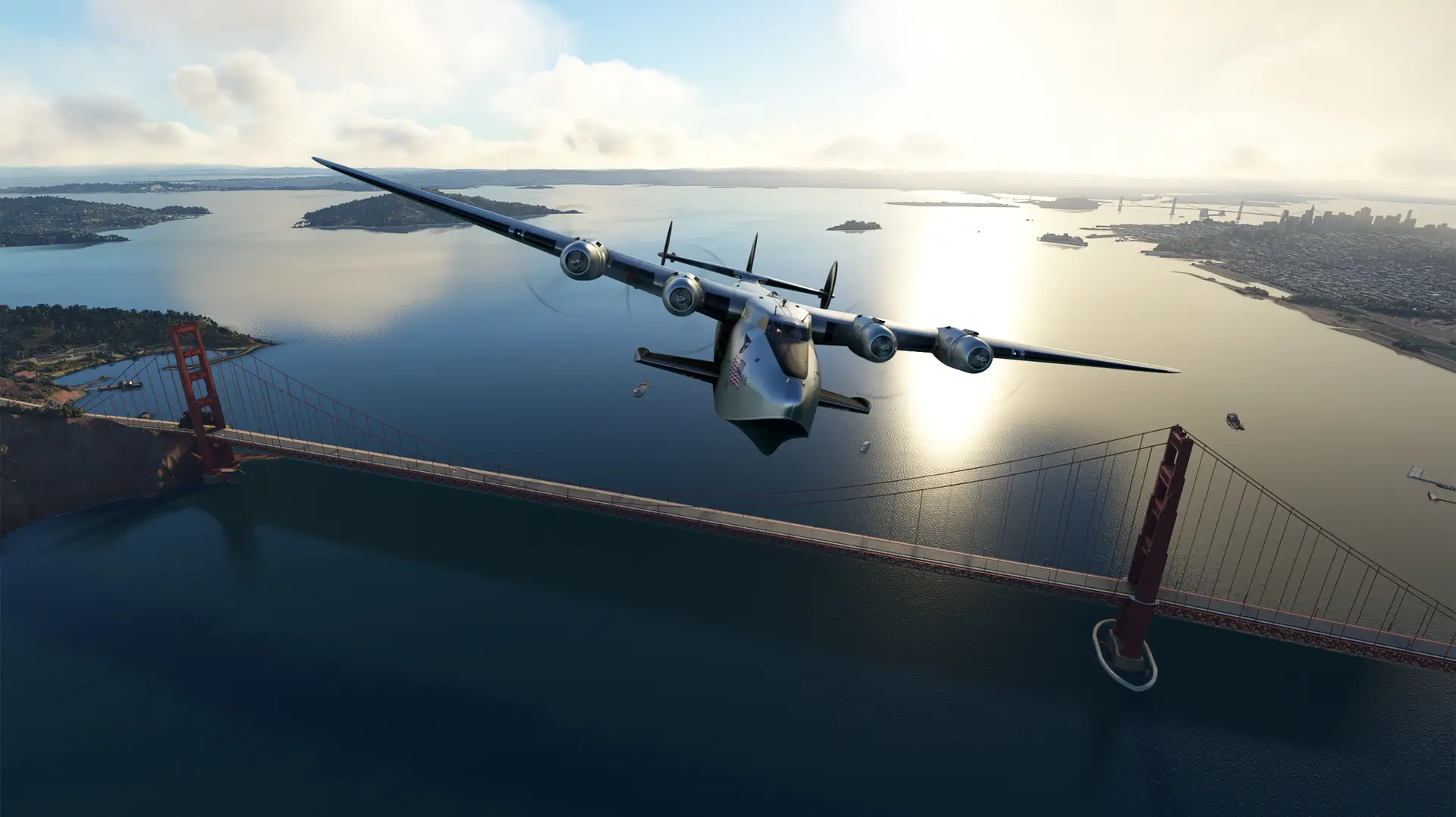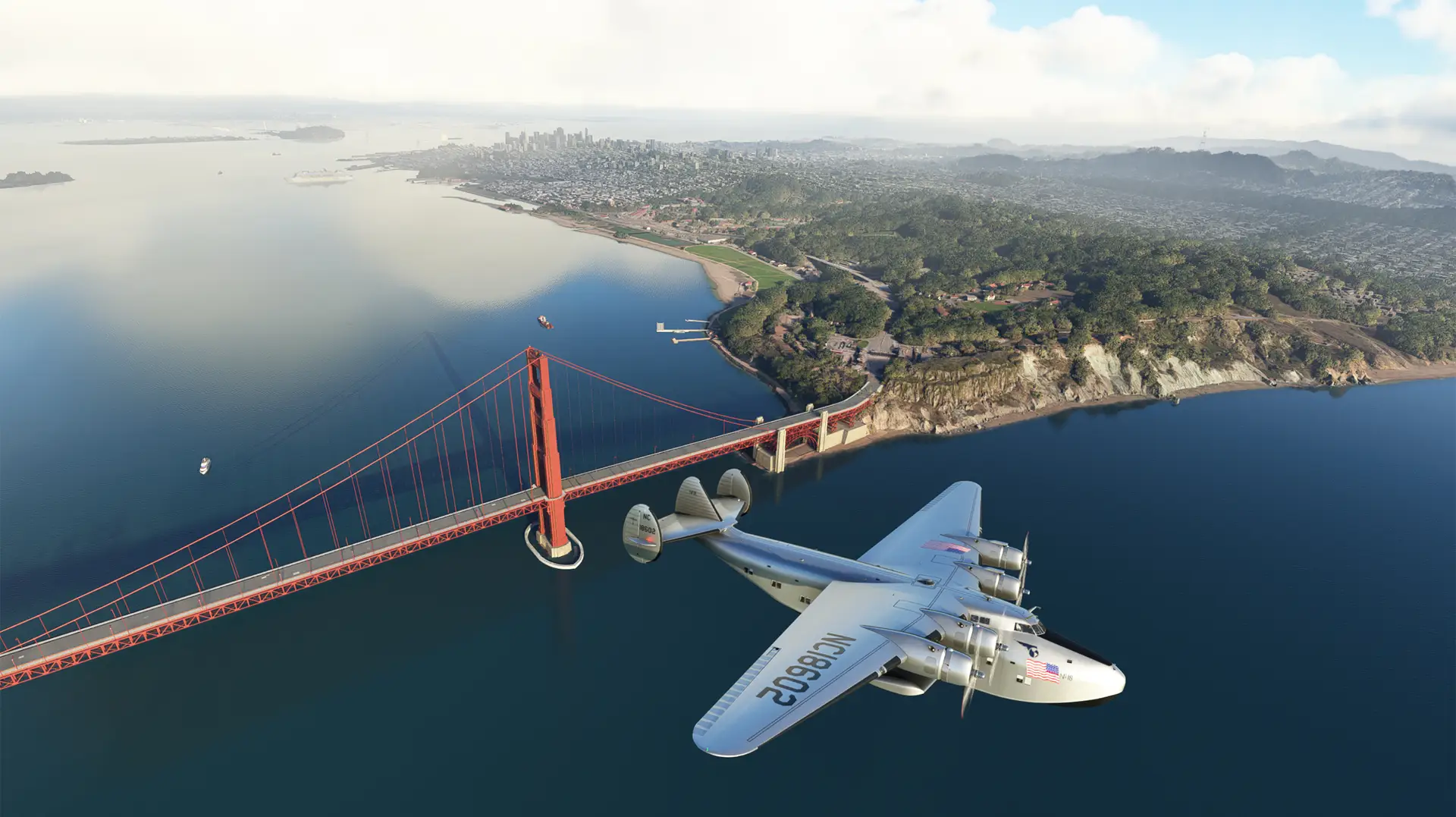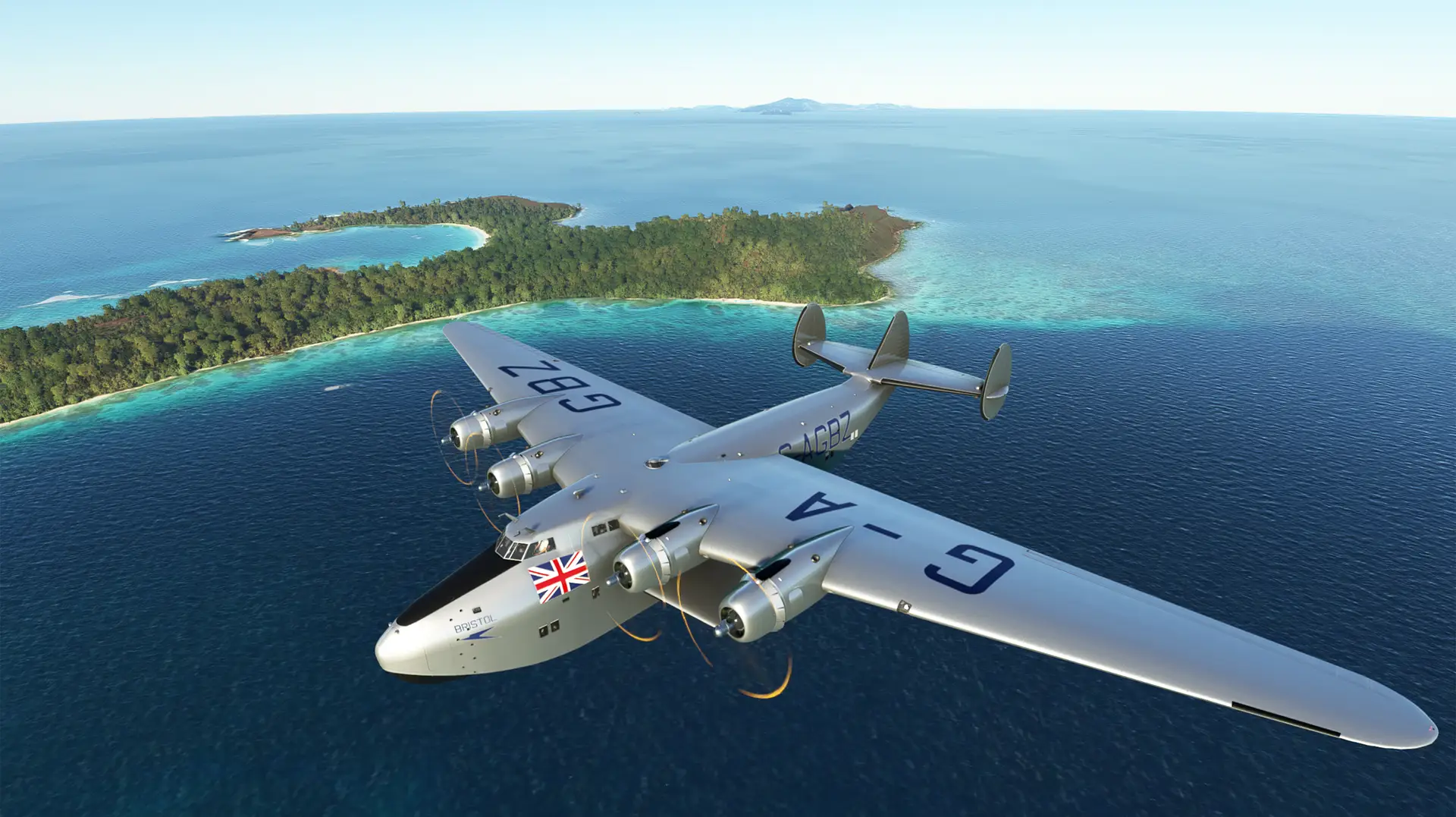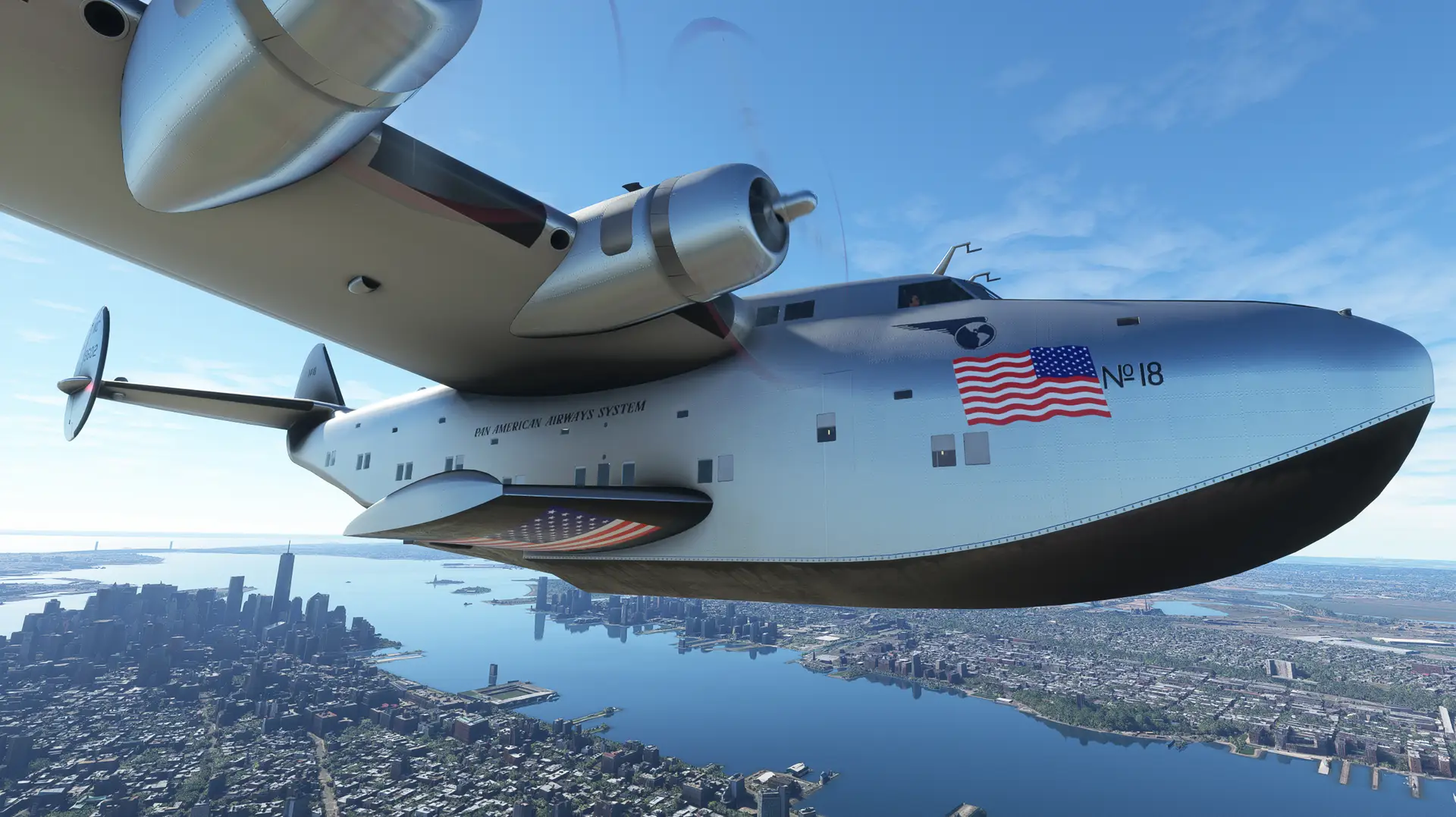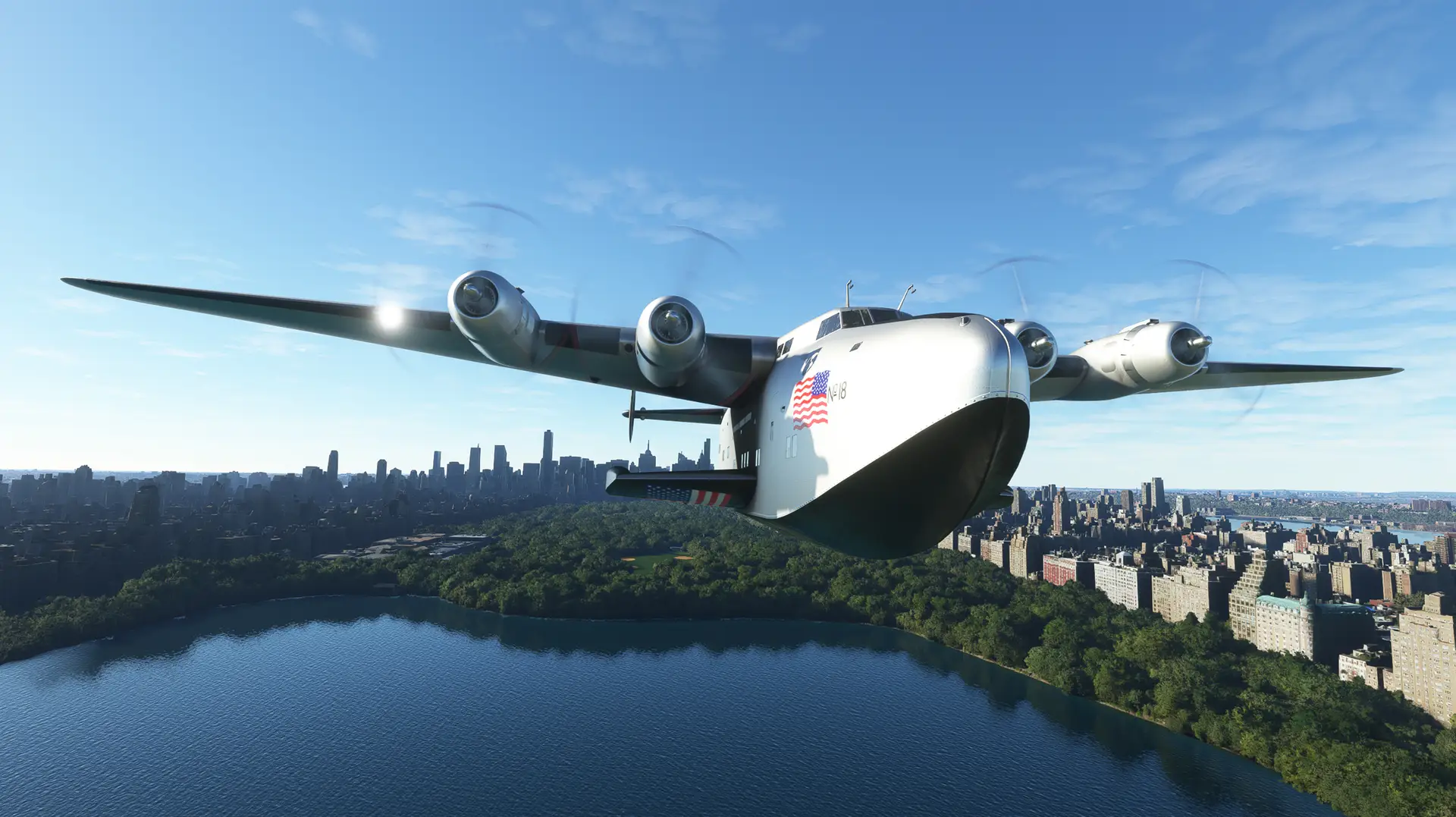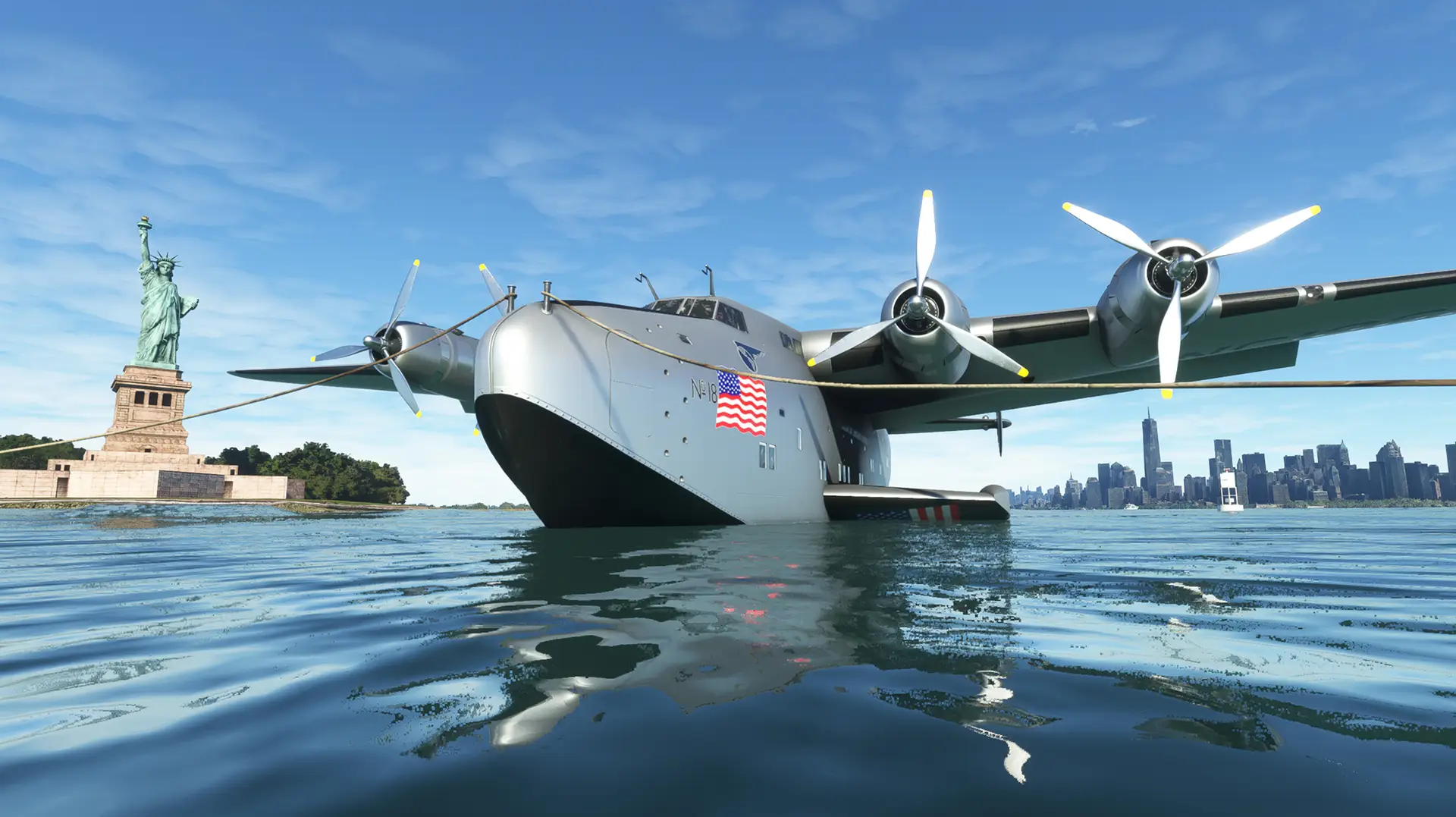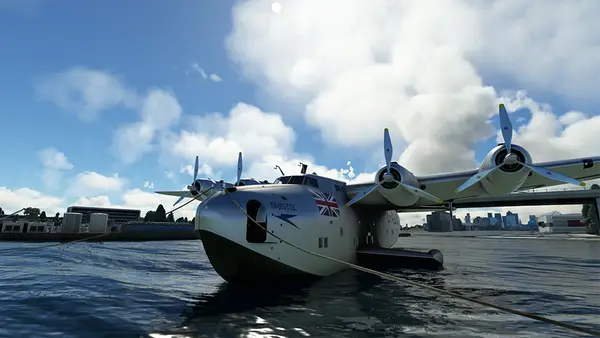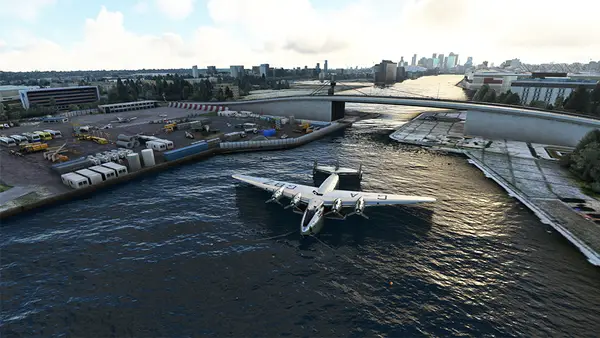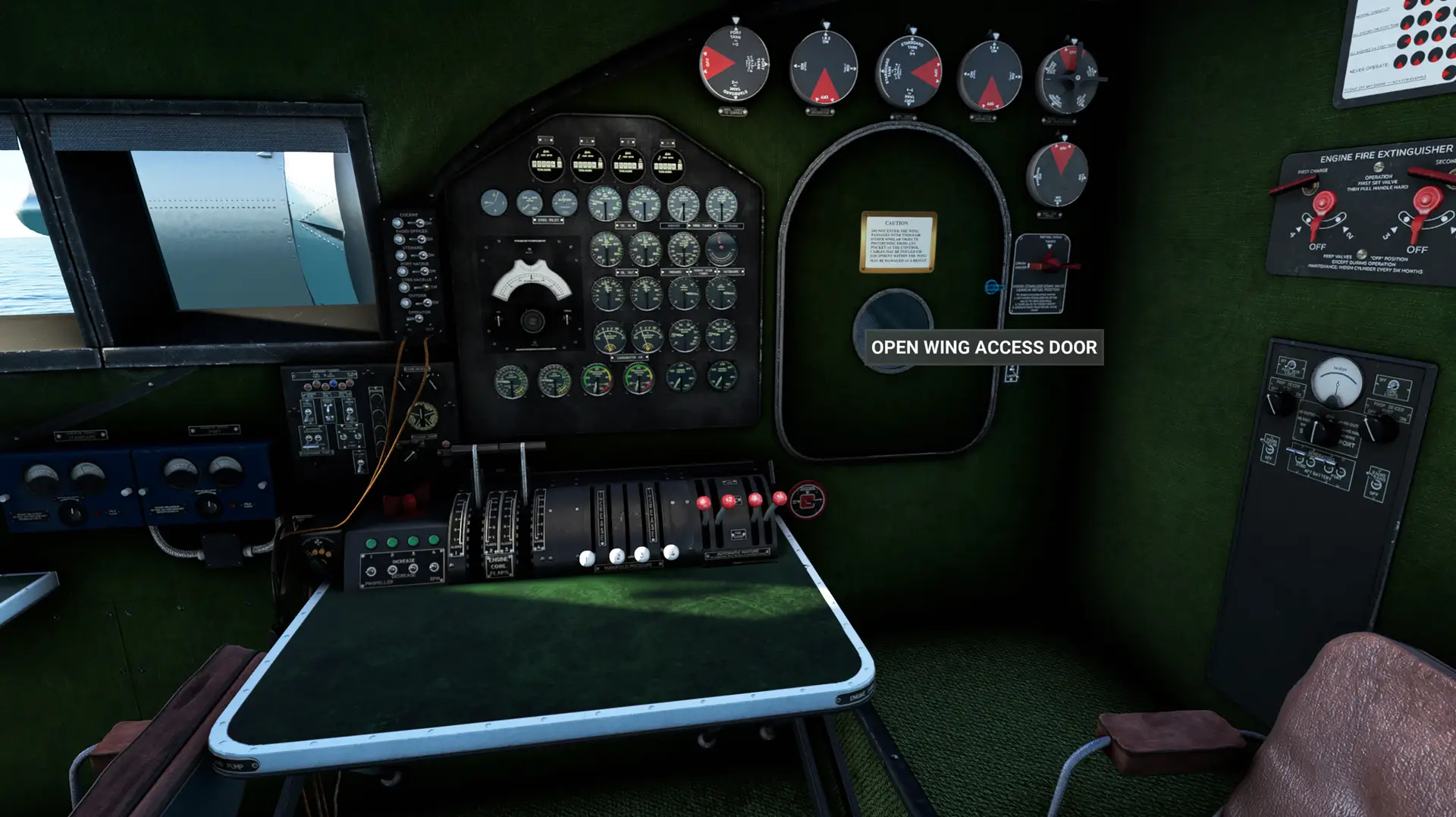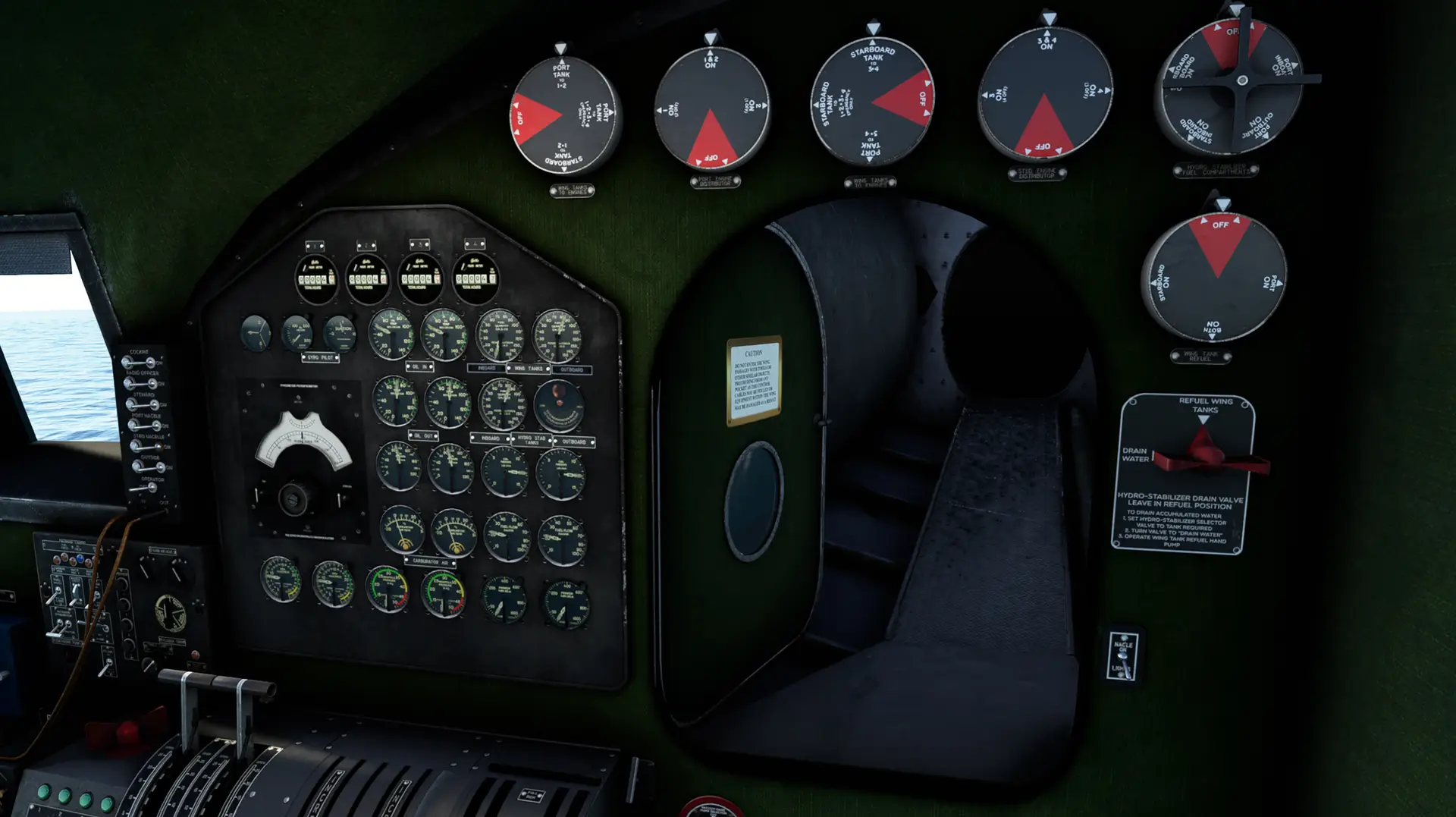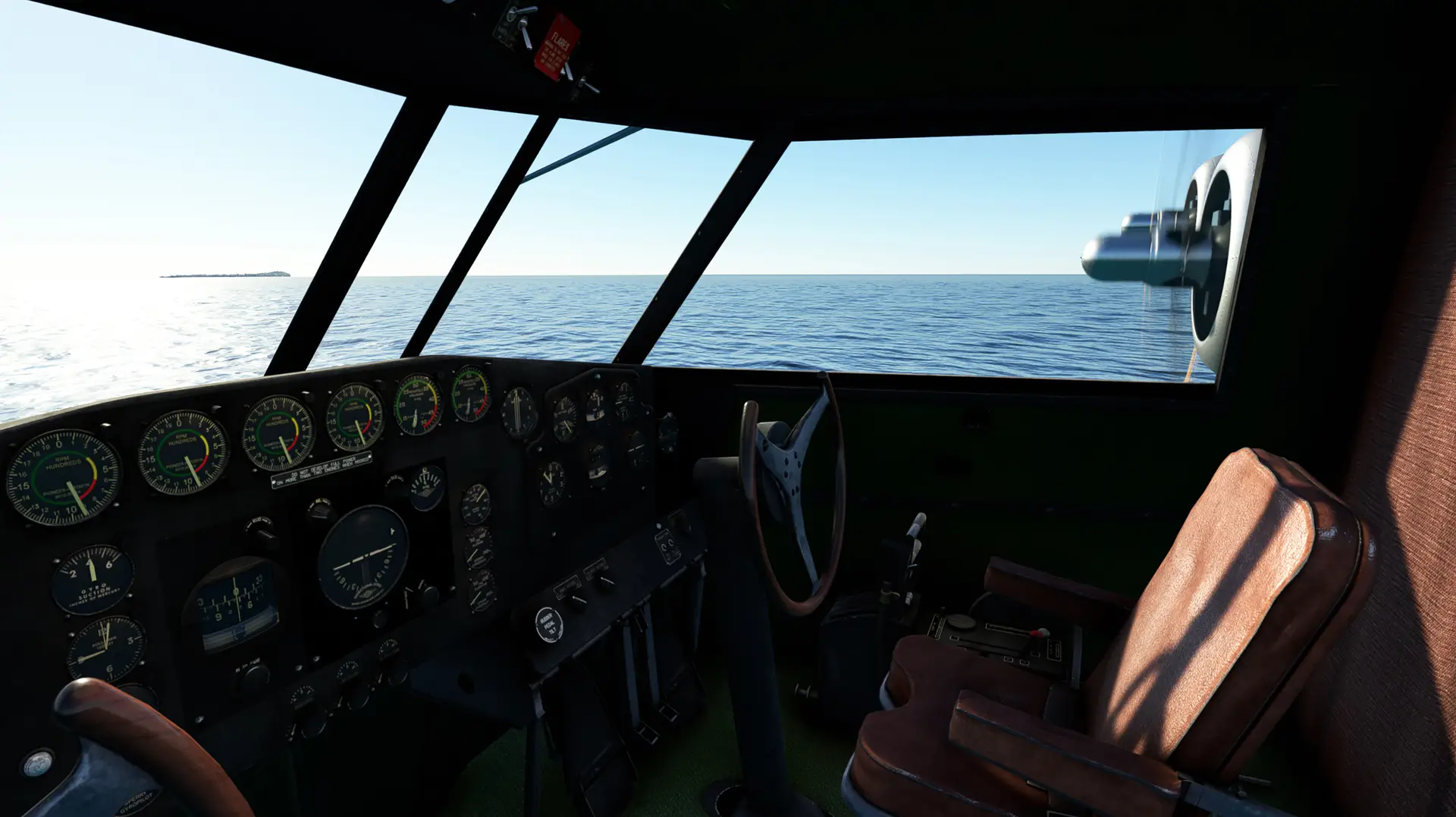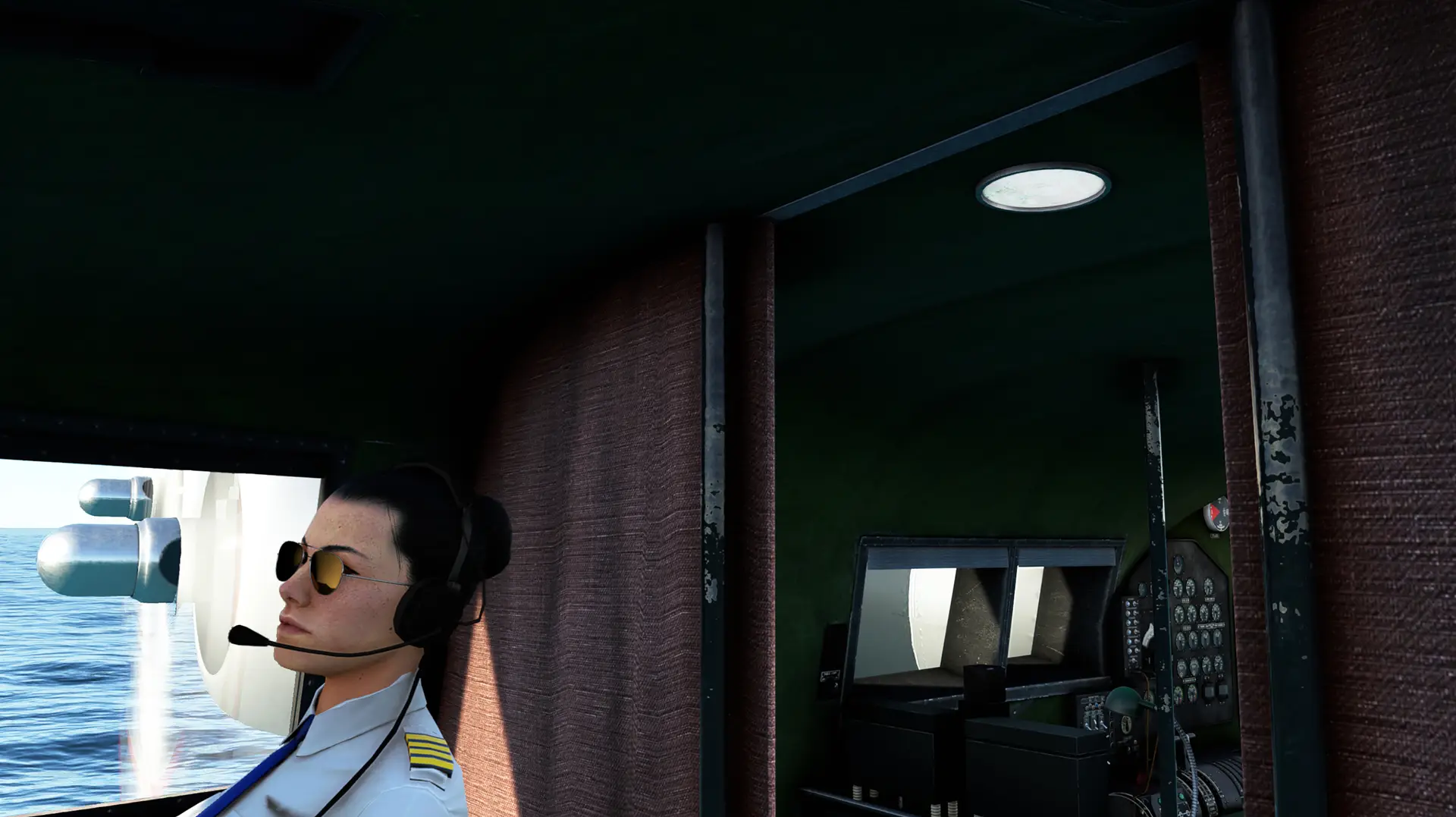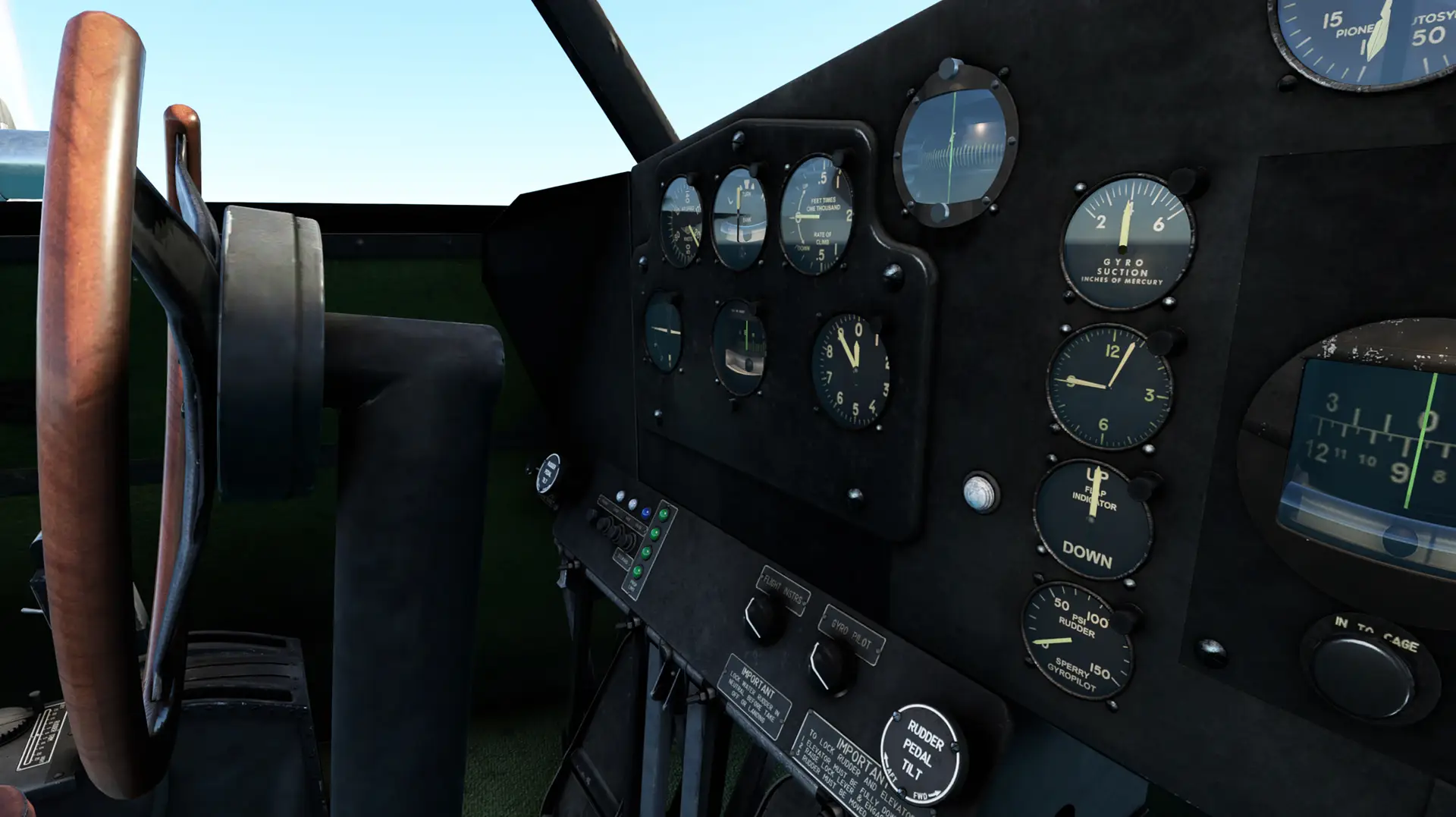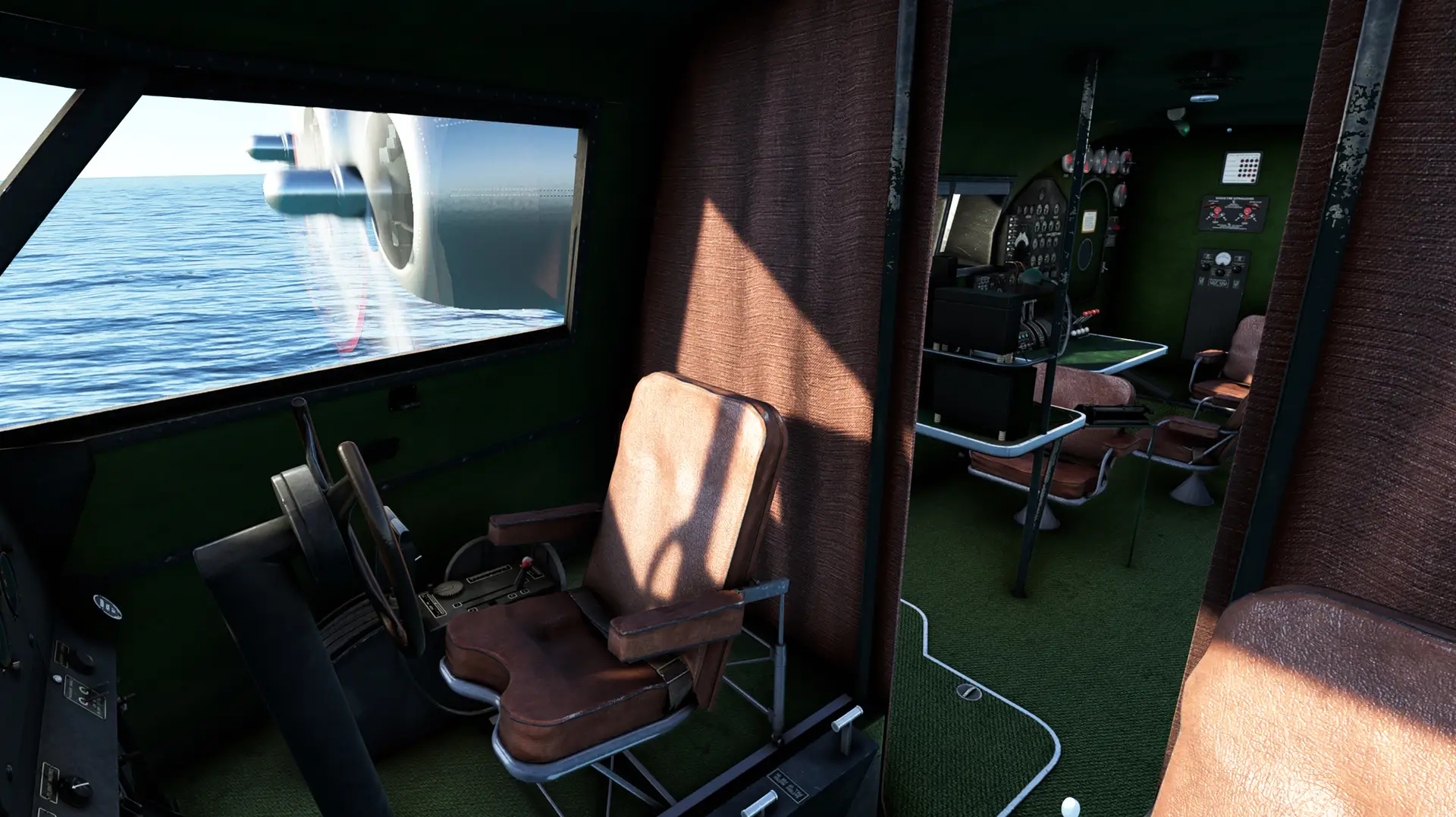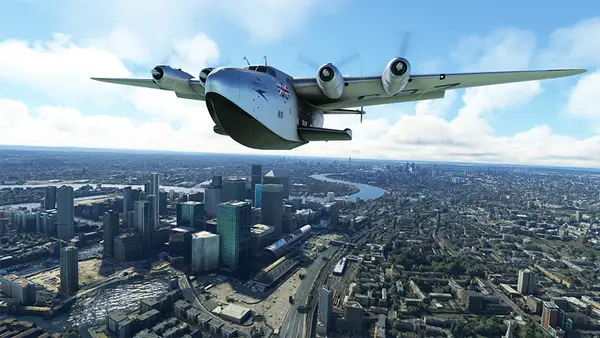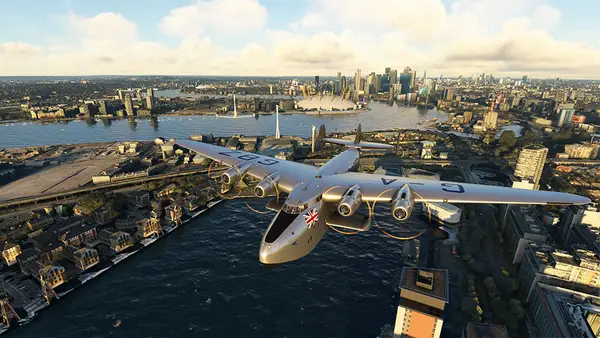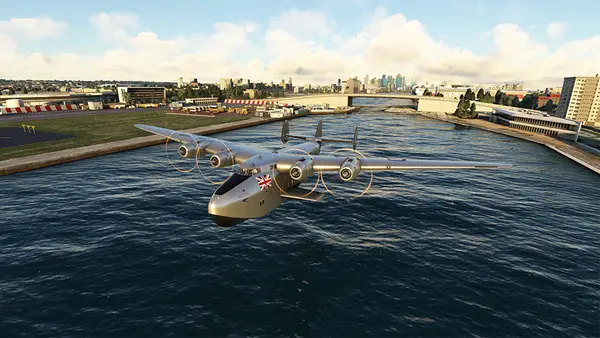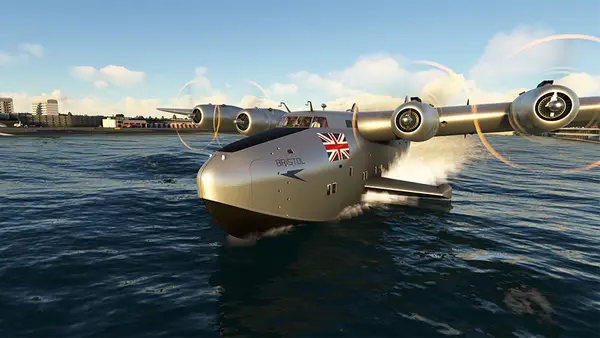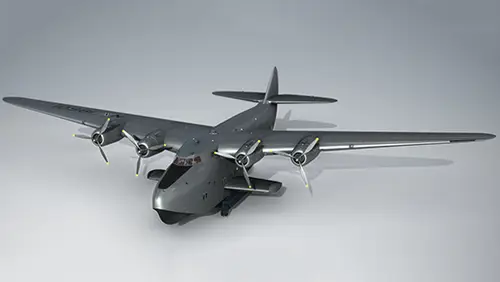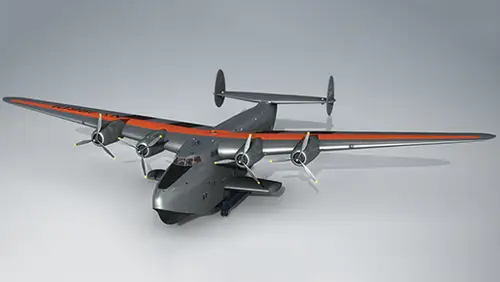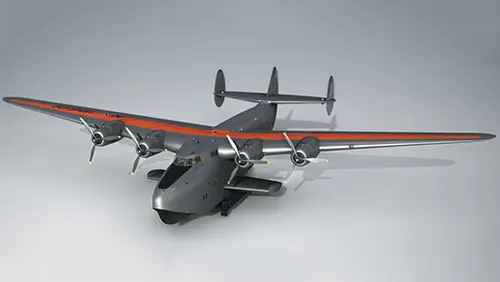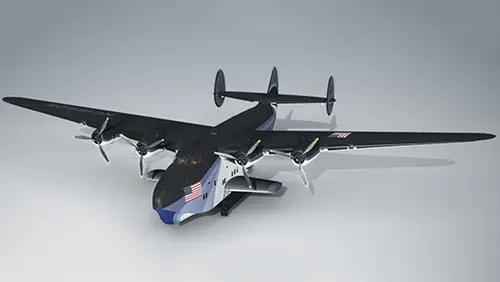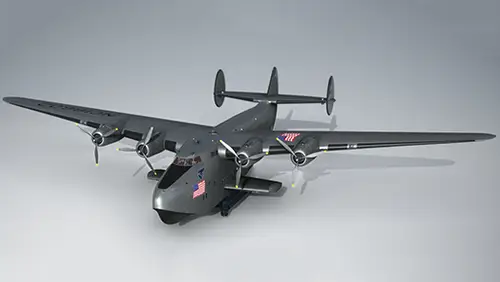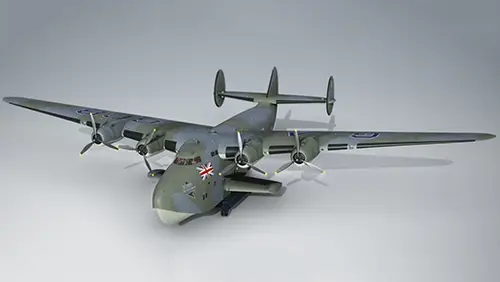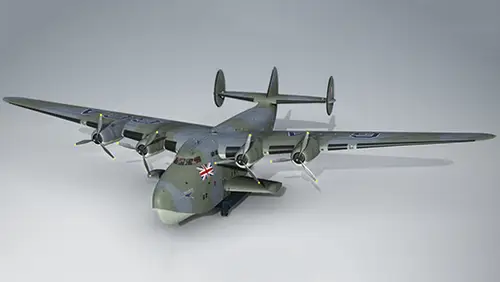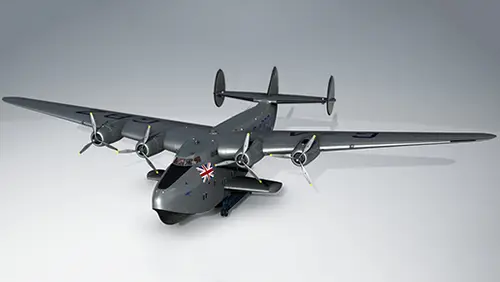VERSION 1.7.6 RELEASED DECEMBER 8, 2025
PILOT'S Boeing B-314 - The Clipper v1.7.6
Latest ChangeLog - 8 December 2025
ChangeLog v1.7.6
All models
Minor code modifications for MSFS 2024 Marketplace compatibility
ChangeLog v1.7.4
All models
Extensive adjustments to flight model's contact points.
Reworked exterior water splash effects, especially at the bow area.
Smoother, weighted buoyancy behaviour in water.
Fixed occasional, intermittent wave induced fuselage stutters.
Complete revision and overhaul of the flaps system in the flight model.
B-314 Triple Tail and B-314A
Reintroduction of B-314 trailer underneath the flying boat when in the hangar.
ChangeLog v1.7.2
All models
Fuel pressure code updated.
Flight engineer panel fuel flow gauge needle animation fixed.
Flight engineer panel fuel flow gauge code updated.
Revised airspeed needle code that was erroneously calculating speed via MPH instead of knots.
Fixed reversed aileron trim needle animation.
Gyropilot heading hold recoded.
Gyropilot heading change mode implemented.
Gyropilot pitch hold mode implemented.
Gyropilot pitch change mode implemented.
Radio Operator Station now has tuneable ADF.
Radio Operator Station ADF tracking implemented via the channel deflection needles.
Gyropilot tooltip will now indicate if the gyropilot is misconfigured.
Navigator station map is now clickable to cycle through the available maps.
B-314A Fixed First Officer compass that was INOP.
ChangeLog v1.6.2
All models
Cockpit and Engineer panel propeller RPM lights now functional, they will light up when propeller RPM is too high.
B-314A EGT Gauge at bottom right of Engineer panel now fully functional.
ChangeLog v1.6.0
All models
Added exterior ocean/water splash sounds.
Added interior ocean/water splash sounds. Due to the build and structure of the aicraft, these will be very faint.
ChangeLog v1.5.5
All models
Overhaul of camera views from feedback received.
Eliminated Center Fuel tanks due to Asobo bug on fuel feed.
B-314 Fuel Tank Gauge logic recoded and changed to Gallons - was on Percent.
B-314A Fuel Tank Gauge logic recoded and changed to Gallons - was on Percent.
A big thanks to FlyingsCool5650 for his suggestions regarding the various camera views!
ChangeLog v1.5.0
All models
Intricate detailing and refinement of external textures, with a focus on panels, rivets and fabric areas.
Captain side attitude indicator was not showing pitch - Fixed.
ChangeLog v1.3.0
All models
Fuel Tank Dial code rewritten with input from Asobo to circumvent LVAR code not being read correctly at flight startup.
Fuel Tank Dials now configured and operating properly for Cold & Dark and water runway startups.
Revised some aspects of the flight model.
ChangeLog v1.2.0
All models
Cold & Dark loading will now have the aicraft moored with the mooring lines active.
Gyropilot code has been refined to offer better fidelity on altitude and heading hold.
Revised various VC tooltips for better readability.
Pilot and Copilot yoke hide/show clickspots repositioned.
Copilot hide/show clickspot repositioned.
Added BOAC B-314A Bristol livery, the flag ship of the three Boeing B-314A flying boats of the British Overseas Airways Corporation.
ChangeLog v1.1.5
All models
Animated and functional external exits added to all models. These can be controlled via the intercom panel to the left of the VC Engineer Panel.
Animated and functional VC wing access doors added to all models.
Seaports seperated into individual BGLs to facilitate user customization.
Exterior textures now show more surface detail.
New leather and metal frame textures on VC chairs.
Startup sounds revised.
B-314 Manifold Pressure Gauge on Engineer Panel set to incorrect scale - Fixed.
B-314 Engine RPM Gauge Needles on Cockpit Panel were swapped - Fixed.
B-314A Engine RPM Gauge Needles on Cockpit Panel had incorrect scale - Fixed.
B-314A Engine RPM Gauge Needles on Cockpit Panel were swapped - Fixed.
B-314A Hobbs Meter on Engineer Panel had INOP hour digits - Fixed.
B-314A Manifold Pressure Gauge on Engineer Panel set to incorrect scale - Fixed.
B-314A Flaps adjusted to have the same extension levels as the B-314.
ChangeLog v1.1.0
B-314 Seaports now all have water based parking positions that allow a Cold & Dark startup on water.
All models
Interior texture overhaul with new colours, refining overall depth (Normals) and adding wear and tear
Created functional Cold & Dark startup FLT files
Cockpit
B-314A Attitude Indicator was INOP - fixed
Engineer
B-314A PIONEER Temperature Needles for Engines 3 & 4 misaligned- fixed
Flight Model
Contact Point compression adjustment to improve water handling
Contact Point position adjustment to improve high AOA landing
Contact Point steering adjustment to improve water rudder response
A big thanks to Stearman948713 for his assistance with the Contact Points!
Know Issues
The Fuel Tank Selection Dials all show a visible OFF at startup, even when the engines are running. The LVars for the dials are set correctly, their position is not passed on correctly from the FLT LVar section to the visible model. This is being discussed with Asobo.
The Mooring Light Switch, which activates a mooring of the aicraft with position hold and the mooring lines appearing, is not activated upon a Cold & Dark startup. This is due to the same LVar issue as described above.
